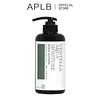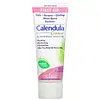What's inside
What's inside
 Key Ingredients
Key Ingredients

No key ingredients
 Benefits
Benefits

 Concerns
Concerns

 Ingredients Side-by-side
Ingredients Side-by-side

Water
Skin ConditioningGlycerin
HumectantEthyl Hexanoate
PerfumingNiacinamide
SmoothingCetearyl Alcohol
EmollientGlyceryl Stearate
EmollientPEG-100 Stearate
Cyclopentasiloxane
EmollientCyclohexasiloxane
EmollientButylene Glycol
HumectantCentella Asiatica Extract
Cleansing1,2-Hexanediol
Skin ConditioningCamellia Sinensis Leaf Extract
AntimicrobialArtemisia Princeps Extract
Skin ConditioningSodium Hyaluronate
HumectantFucus Vesiculosus Extract
EmollientPrunella Vulgaris Extract
AntioxidantHamamelis Virginiana Leaf Extract
Skin ConditioningNelumbium Speciosum Flower Extract
Skin ConditioningSolanum Melongena Fruit Extract
Skin ConditioningMelaleuca Alternifolia Leaf Extract
PerfumingHydrolyzed Collagen Extract
Skin ProtectingDipropylene Glycol
HumectantHippophae Rhamnoides Fruit Extract
Skin ConditioningAscorbic Acid
AntioxidantSqualane
EmollientBeta-Glucan
Skin ConditioningSorbitan Stearate
EmulsifyingStearic Acid
CleansingDimethicone
EmollientCaprylic/Capric Triglyceride
MaskingCarbomer
Emulsion StabilisingSaccharide Hydrolysate
HumectantXanthan Gum
EmulsifyingAdenosine
Skin ConditioningPotassium Hydroxide
BufferingChlorphenesin
AntimicrobialCaprylyl Glycol
EmollientDisodium EDTA
Parfum
MaskingGeraniol
PerfumingLimonene
PerfumingLinalool
PerfumingWater, Glycerin, Ethyl Hexanoate, Niacinamide, Cetearyl Alcohol, Glyceryl Stearate, PEG-100 Stearate, Cyclopentasiloxane, Cyclohexasiloxane, Butylene Glycol, Centella Asiatica Extract, 1,2-Hexanediol, Camellia Sinensis Leaf Extract, Artemisia Princeps Extract, Sodium Hyaluronate, Fucus Vesiculosus Extract, Prunella Vulgaris Extract, Hamamelis Virginiana Leaf Extract, Nelumbium Speciosum Flower Extract, Solanum Melongena Fruit Extract, Melaleuca Alternifolia Leaf Extract, Hydrolyzed Collagen Extract, Dipropylene Glycol, Hippophae Rhamnoides Fruit Extract, Ascorbic Acid, Squalane, Beta-Glucan, Sorbitan Stearate, Stearic Acid, Dimethicone, Caprylic/Capric Triglyceride, Carbomer, Saccharide Hydrolysate, Xanthan Gum, Adenosine, Potassium Hydroxide, Chlorphenesin, Caprylyl Glycol, Disodium EDTA, Parfum, Geraniol, Limonene, Linalool
 Reviews
Reviews

Ingredients Explained
These ingredients are found in both products.
Ingredients higher up in an ingredient list are typically present in a larger amount.
1,2-Hexanediol is a synthetic liquid and another multi-functional powerhouse.
It is a:
- Humectant, drawing moisture into the skin
- Emollient, helping to soften skin
- Solvent, dispersing and stabilizing formulas
- Preservative booster, enhancing the antimicrobial activity of other preservatives
Caprylyl Glycol is a humectant and emollient, meaning it attracts and preserves moisture.
It is a common ingredient in many products, especially those designed to hydrate skin. The primary benefits are retaining moisture, skin softening, and promoting a healthy skin barrier.
Though Caprylyl Glycol is an alcohol derived from fatty acids, it is not the kind that can dry out skin.
This ingredient is also used as a preservative to extend the life of products. It has slight antimicrobial properties.
Learn more about Caprylyl GlycolCarbomer is a polymer of acrylic acid. Its main role is to create a gel consistency.
A high amount of carbomer can cause pilling or balling up of products. Don't worry, most products contain 1% or less of carbomer.
Disodium EDTA plays a role in making products more stable by aiding other preservatives.
It is a chelating agent, meaning it neutralizes metal ions that may be found in a product.
Disodium EDTA is a salt of edetic acid and is found to be safe in cosmetic ingredients.
Learn more about Disodium EDTAGlycerin is already naturally found in your skin. It helps moisturize and protect your skin.
A study from 2016 found glycerin to be more effective as a humectant than AHAs and hyaluronic acid.
As a humectant, it helps the skin stay hydrated by pulling moisture to your skin. The low molecular weight of glycerin allows it to pull moisture into the deeper layers of your skin.
Hydrated skin improves your skin barrier; Your skin barrier helps protect against irritants and bacteria.
Glycerin has also been found to have antimicrobial and antiviral properties. Due to these properties, glycerin is often used in wound and burn treatments.
In cosmetics, glycerin is usually derived from plants such as soybean or palm. However, it can also be sourced from animals, such as tallow or animal fat.
This ingredient is organic, colorless, odorless, and non-toxic.
Glycerin is the name for this ingredient in American English. British English uses Glycerol/Glycerine.
Learn more about GlycerinWater. It's the most common cosmetic ingredient of all. You'll usually see it at the top of ingredient lists, meaning that it makes up the largest part of the product.
So why is it so popular? Water most often acts as a solvent - this means that it helps dissolve other ingredients into the formulation.
You'll also recognize water as that liquid we all need to stay alive. If you see this, drink a glass of water. Stay hydrated!
Learn more about Water